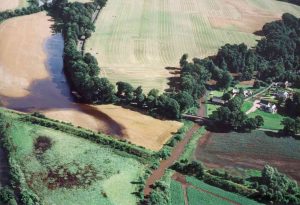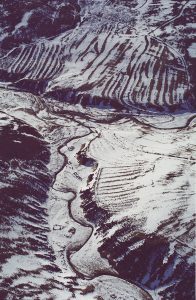Welcome to the team!
Summer Internship
Welcome to the team!

Following on from last year’s successful conference in co-operation with MANCENT, we are continuing the series of conferences on the Roman Military.
The next conference will be on 23 September 2017 in Manchester
The topic will be
The idea is to explore how the Roman army is was using rivers for their own needs, of particular interest is the questions of the presence of harbours in the vicinity of Roman forts.
In the last 10 years, a lot of research has been conducted on Roman trade and harbour installations, both in Britain and especially abroad from Ostia to the large research project on the Rhine harbours and anchorages.
We would like to invite established scholars and postgraduate to submit papers to this day conference and workshop. The deadline for submissions will be April 15th, 2017.
Suggestions for papers (c. 20-30 minutes) should be sent to :
Dr. Birgitta Hoffmann, Roman Gask Project. (latinteacher@btinternet.com) or directly director.romangaskproject@yahoo.com.
And we are all set for our first GIS-base camp of 2017. March 10-12, our dedicated band of GIS specialists will set up our new virtual field study area as well as working on the much smaller scale of the finds distributions from our surveys.
The aim for this weekend to set up a working model of the landscape reconstructions in the Angus/South Aberdeenshire area, which will be needed for our field work later in the year.
Beginning with the databases from CANMORE we will try and reconstruct the old landscapes of the area, taking account of the now defunct pass routes through the Mearns as well as the older road network, which was completely transformed in the 20th century.
A second team will be working at the finds analysis of various of the fort sites that we surveyed in the last decade to prepare the final reports.
This is the first of our base camps and we are willing to take volunteers. We work with QGIS. If you are interested in joining the project, please drop us an email.
Today we added the 2010 Annual report for the Roman Gask Project under the Annual reports, it contains details about our Woodhead excavations and the Inchtuthil survey.
Best wishes for the new year from all of us at the Roman Gask Project

One of the many abandoned villages in the Perthshire Highlands.
 I
I
On Tuesday 29th November 2016 David Woolliscroft has been invited to give a talk on “How far north did the Gask System extend (and when)?” as part of the University of Durham’s Birley Lectures which are organised together with Hatfield College.
For the occasion, he decided to bring together a lot of his research in the last three years away from the Inchtuthil site. These are his current summary of the lecture:
“For the lecture I wanted to pick something that was relevant to Eric Birley (and my personal memories of him), but which also fitted in with the Roman Gask Project’s latest research. I thought that something along the lines of “How far north did the Roman Gask system extend (and when)?”
It would start with Eric’s prescience over a pre-Agricolan date for Carlisle, which has since been fully vindicated, and seems to extend far more widely to sites in the north of England. Rather less noticed, however, he also speculated that this early activity might extend much further north. In the last two decades, a number of scholars have returned to this view, and evidence from the Roman Gask Project that some of the Flavian sites in Scotland seemed to have longer than expected service lives provided added support. That said, in the last few years, evidence has begun to emerge that the picture may actually be more complex, with signs that the Gask system may extend further north than believed, that Antonine activity may be more extensive than we expected to the north of the Antonine Wall, and finally that the Gask road, which was thought to be the fundamental anchor of the Flavian system, may not be Flavian at all.”
Andrew Tibbs, Organiser of the Birley Lectures, said the following about the scope of these lectures in the Michaelmas Term in Durham:
“We’ve just launched the programme for the Birley Lectures on Roman Britain, taking place throughout Michaelmas Term at Hatfield College. The first lecture is being given by Prof Antony Birley on ‘The Young Eric Birley’, former Master of the College and Head of Archaeology at Durham.
Other speakers include David Breeze, David Woolliscroft, and Richard Hingley.
Everyone’s welcome, but seating is limited. Hope to see some people there.”
The Lectures will take place in the Birley Room in Hatfield College, Durham.